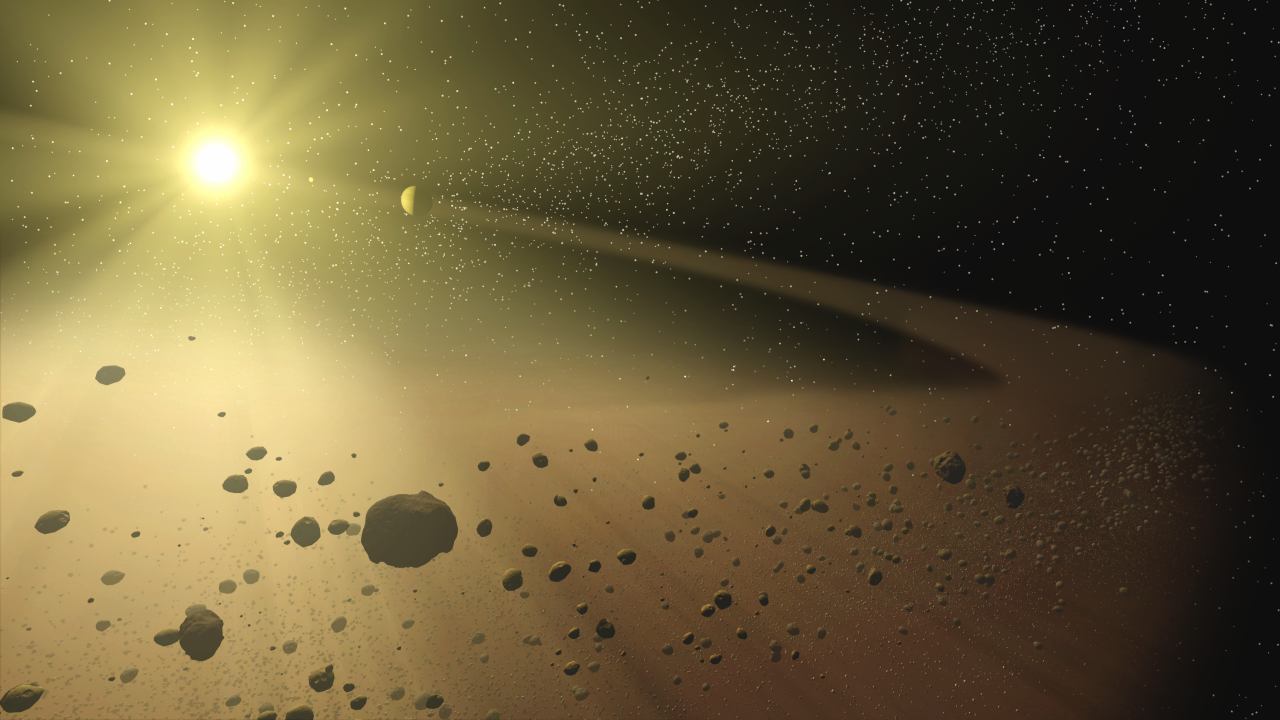
There has been a lot of discussion during the past several days regarding a discovery by the Kepler Space Telescope, which, according to some, might be the first evidence for advanced extraterrestrial intelligence, or perhaps just a weird but natural phenomenon instead.
Such a discovery would, of course, be extraordinary, and as Bill Nye says, “change the world.” But, as Carl Sagan famously noted, “extraordinary claims require extraordinary evidence.”
So what does the evidence itself actually say so far? Not really a lot, since there are still many unknowns. What it does show is that something unique and very interesting is occurring around the star in question, KIC 8462852, which is about 1,480 light-years from Earth and a little larger and hotter than the Sun.
The whole debate started after an article appeared the The Atlantic, regarding the discovery, which stated that a “strange mess of objects” has been spotted orbiting this star. The finding was actually made by “citizen scientists” working with Planet Hunters, a program founded by astronomers involved with the Kepler mission, which searches for exoplanets (and has found thousands). The extra eyes were needed to help sift through the mountains of Kepler data and examine the light patterns emanating from the stars which Kepler was studying.
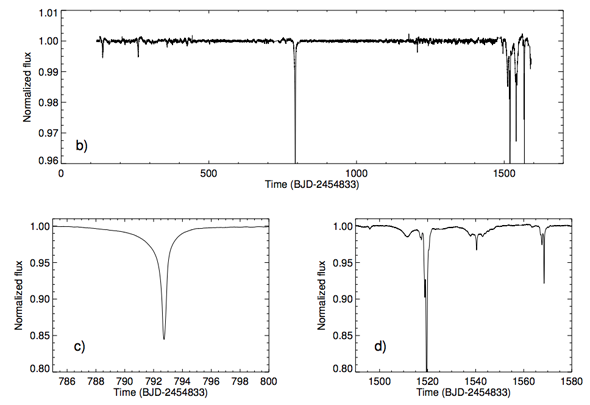
The anomaly was first noted in 2011, when this star was found to be emitting a light pattern unlike any seen before.
“We’d never seen anything like this star,” said Tabetha Boyajian, a postdoc at Yale. “It was really weird. We thought it might be bad data or movement on the spacecraft, but everything checked out.”
The discovery was certainly unusual: The star was apparently surrounded by a mass of objects, in a relatively tight formation, blocking out a significant amount of the star’s light as they orbited. Could it be a debris disk, as seen around many other stars? That would be possible, except for one problem: those are found around young stars which are still forming; this is how our own Solar System started. But KIC 8462852 is not a young star, so any debris disk should be long gone by now, other than perhaps smaller asteroids and comets like in our own Solar System. Also, debris disks give off extra infrared light, but none was detected in this case.
So what about planets? That would seem to be an obvious possibility. There are problems with that scenario, too. The objects don’t block out the star’s light in a regular, periodic manner like planets would do as they orbit and periodically transit in front of the star, as seen by us. The dips in starlight vary a lot, up to 22 percent in one case. Even a planet the size of Jupiter would only block about 1 percent of the star’s light at the most. The random nature of the dips also means it’s not a companion star, and, as Phil Plait noted in his excellent and sensible summary of this debate, we would be able to see it if it were there. There are hundreds of such dips, some with odd shapes. Also, some of the dips have lasted for up to 80 days at a time.
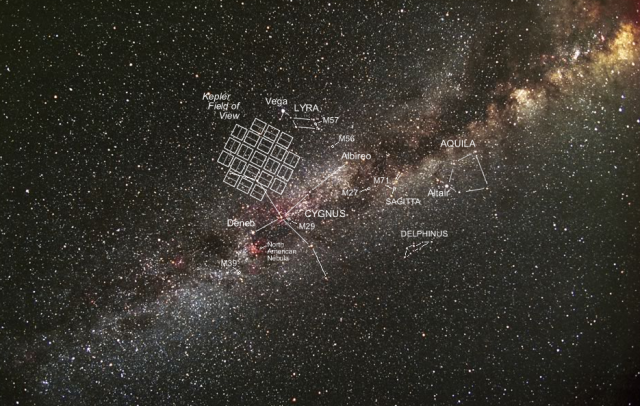
The new paper by Kepler scientists attempts to explain the findings, focusing on natural explanations. From the abstract:
“Over the duration of the Kepler mission, KIC 8462852 was observed to undergo irregularly shaped, aperiodic dips in flux down to below the 20% level. The dipping activity can last for between 5 and 80 days. We characterize the object with high-resolution spectroscopy, spectral energy distribution fitting, and Fourier analyses of the Kepler light curve. We determine that KIC 8462852 is a main-sequence F3 V/IV star, with a rotation period ∼ 0.88 d, that exhibits no significant IR excess. In this paper, we describe various scenarios to explain the mysterious events in the Kepler light curve, most of which have problems explaining the data in hand. By considering the observational constraints on dust clumps orbiting a normal main-sequence star, we conclude that the scenario most consistent with the data in hand is the passage of a family of exocomet fragments, all of which are associated with a single previous breakup event. We discuss the necessity of future observations to help interpret the system.”
Several possible explanations are explored, such as instrument defects, starspots, shrapnel from collisions in an asteroid belt, or planetary collisions. A brief overview is also available on the Planet Hunters website. All of the possible scenarios had flaws, although one possibility is considered to be the most likely: that a swarm of comets was swept into orbit around the star, when another star passed close by. If so, it would need to be a very large clump of comets to explain the amount of light dimming from the star, but it remains, at least for now, the most accepted theory.
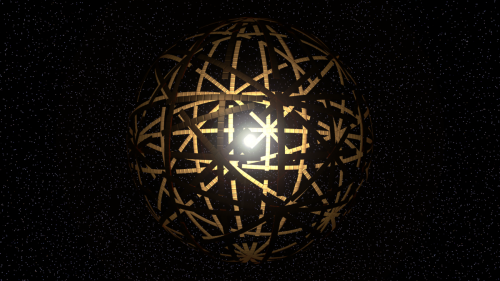
Things started to get more interesting when Boyajian acknowledged that other scenarios were still possible. What scenarios? Well, aliens for one.
The finding caught the attention of Jason Wright, an astronomer at Penn State University, who studies exoplanets and has done research regarding how data from Kepler might be studied for signs of possible advanced extraterrestrial civilizations.
Wright is intrigued by the discovery, but maintains a solid scientific approach.
“When [Boyajian] showed me the data, I was fascinated by how crazy it looked,” Wright said. “Aliens should always be the very last hypothesis you consider, but this looked like something you would expect an alien civilization to build.”
Wright is referring to something like what is known as a Dyson Sphere, where a hypothetical civilization builds massive structures in orbit around its star to harness the star’s energy. Such structures might cause dips in the light from the star similar to what is being seen at KIC 8462852. Instead of a solid sphere, it might consist of many smaller panels forming the overall shape of a sphere, or other shape. There could also be Dyson swarms of smaller objects instead of one giant construction.
A good overview of Wright’s position on the matter is available here on his blog. There is also a new paper in the Astrophysical Journal just published by Wright and other colleagues, ‘The Gˆ Search for Extraterrestrial Civilizations With Large Energy Supplies. IV. the Signatures and Information Content of Transiting Megastructures,’ which discusses the KIC 8462852 discovery (section 4) as well as other possible candidates.
The kind of technology involved in building something like a Dyson Sphere is something that has been seriously proposed by some scientists since the 1970s. They could be detected by Kepler if close enough (and if they exist). But is that what is happening here?
From The Atlantic article:
“Wright and his co-authors say the unusual star’s light pattern is consistent with a “swarm of megastructures,” perhaps stellar-light collectors, technology designed to catch energy from the star.”
Wright is now working with Boyajian and Andrew Siemion, Director of the SETI Research Center at the University of California, Berkeley, on a proposal to have a large radio telescope, probably Green Bank Telescope in West Virginia, aimed at the star next January, in the slight but hopeful chance that some kind of radio signals might be detected. It’s a long shot to say the least, but if there’s even a chance it might be something alien, then we may as well take a listen.
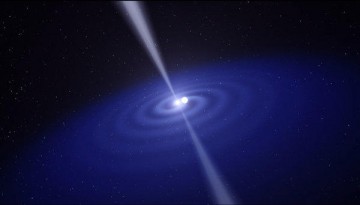
From the new paper:
“We have in KIC 8462 a system with all of the hallmarks of a Dyson swarm (Section 2.1.3): aperiodic events of almost arbitrary depth, duration, and complexity. Historically, targeted SETI has followed a reasonable strategy of spending its most intense efforts on the most promising targets. Given this object’s qualitative uniqueness, given that even contrived natural explanations appear inadequate, and given predictions that Kepler would be able to detect large alien megastructures via anomalies like these, we feel is the most promising stellar SETI target discovered to date. We suggest that KIC 8462 warrants significant interest from SETI in addition to traditional astrophysical study, and that searches for similar, less obvious objects in the Kepler data set are a compelling exercise.”
As Wright himself stresses however, taking a cautious approach however is prudent; various other bizarre yet natural cosmic phenomena have been misidentified before as possible artifacts of distant aliens, such as pulsars, first discovered in 1961. The emissions from pulsars were so regular that it was considered possible they were alien signals. As pulsars’ co-discoverer Jocelyn Bell Burnell once commented:
“We did not really believe that we had picked up signals from another civilization, but obviously the idea had crossed our minds and we had no proof that it was an entirely natural radio emission.”
But now pulsars are known to be weird, but natural, phenomenon. They are a reminder that just because is weird and never seen before, doesn’t necessarily mean it has to involve aliens. As also noted by Jon Jenkins from the Kepler team:
“It’s not unusual for new phenomena to be greeted with an explanation calling for extraterrestrials that later prove to be due to more mundane but novel natural phenomena.”
So a very cautious approach is certainly warranted. As past experience shows, the odds greatly favor that this also will turn out to have a natural explanation, but in the chance, even if small, that it is something else, it can’t hurt to take a closer look.
Want to keep up-to-date with all things space? Be sure to “Like” AmericaSpace on Facebook and follow us on Twitter: @AmericaSpace





While it is fanciful to imagine alien intelligent life creating some sort of “Dyson-like” objects, I agree that a more cautious approach is to further examine the region. Time will tell.
Paul Scott Anderson
Will further review have to wait until the James Webb Telescope it put in Orbit to further provide analytical tools or are there other studies that can be done with existing assets?
“We have in KIC 8462 a system with all of the hallmarks of a Dyson swarm – aperiodic events of almost arbitrary depth, duration, and complexity. Given this object’s qualitative uniqueness, given that even contrived natural explanations appear inadequate, and given predictions that Kepler would be able to detect large alien megastructures via anomalies like these, we feel is the most promising stellar SETI target discovered to date.”
But of course since it is so easy to naysay, let’s write an article saying it is probably nothing. I have seen the same thing done with everything from the asteroid and comet impact threat to global warming.
Some people always want to hear someone say something contrary and so somebody is always willing to provide that I guess.
Too good to be true. I feel pissed.
Send an excited, high-powered laser greeting directly at KIC 8462852 and wait 3,000 years for a reply.